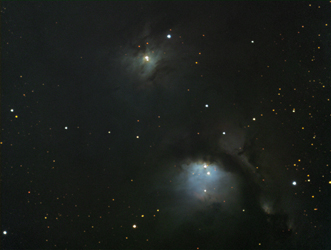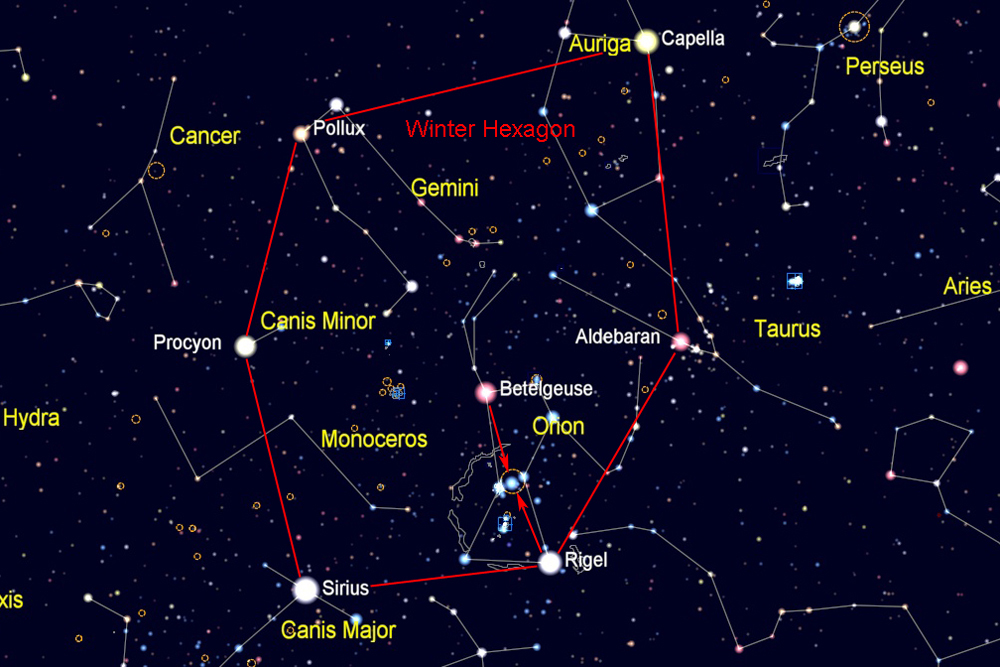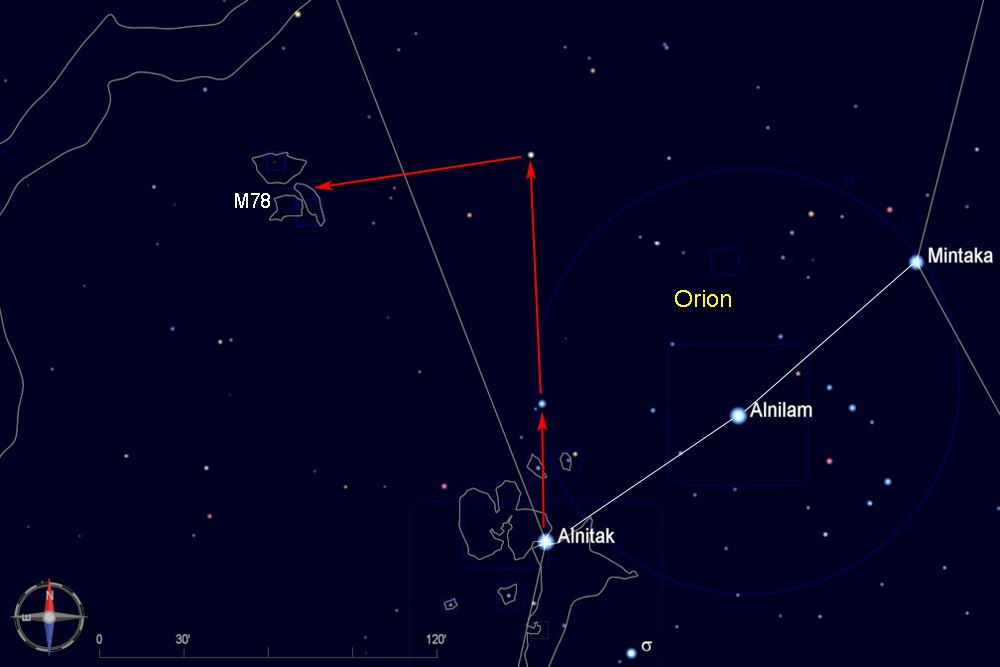
If you don't know how to find the constellation Orion, first find the Winter Hexagon, which is composed of six of the brightest stars in the sky--Sirius, Procyon, Pollux, Capella, Aldebaran, and Rigel. On mid-winter evenings, these stars form a large oval stretching from low in the south to nearly overhead. As spring begins, the Winter Hexagon sinks toward the west. The constellation Orion and its bright red star Betelgeuse are inside the Hexagon.
Between Betelgeuse and Rigel is a row of three bright stars that form the belt of Orion.

M78 is just 2.5 degrees to the northeast of Alnitak, the easternmost of the three stars in the belt of Orion. But you may have trouble pointing the telescope to that specific spot in the sky. If so, one route is to follow the line of two dim stars (magnitudes 5 and 6) directly north from Alnitak, as shown below. From the second star, move east about 1.5 degrees and you should arrive at M78.
